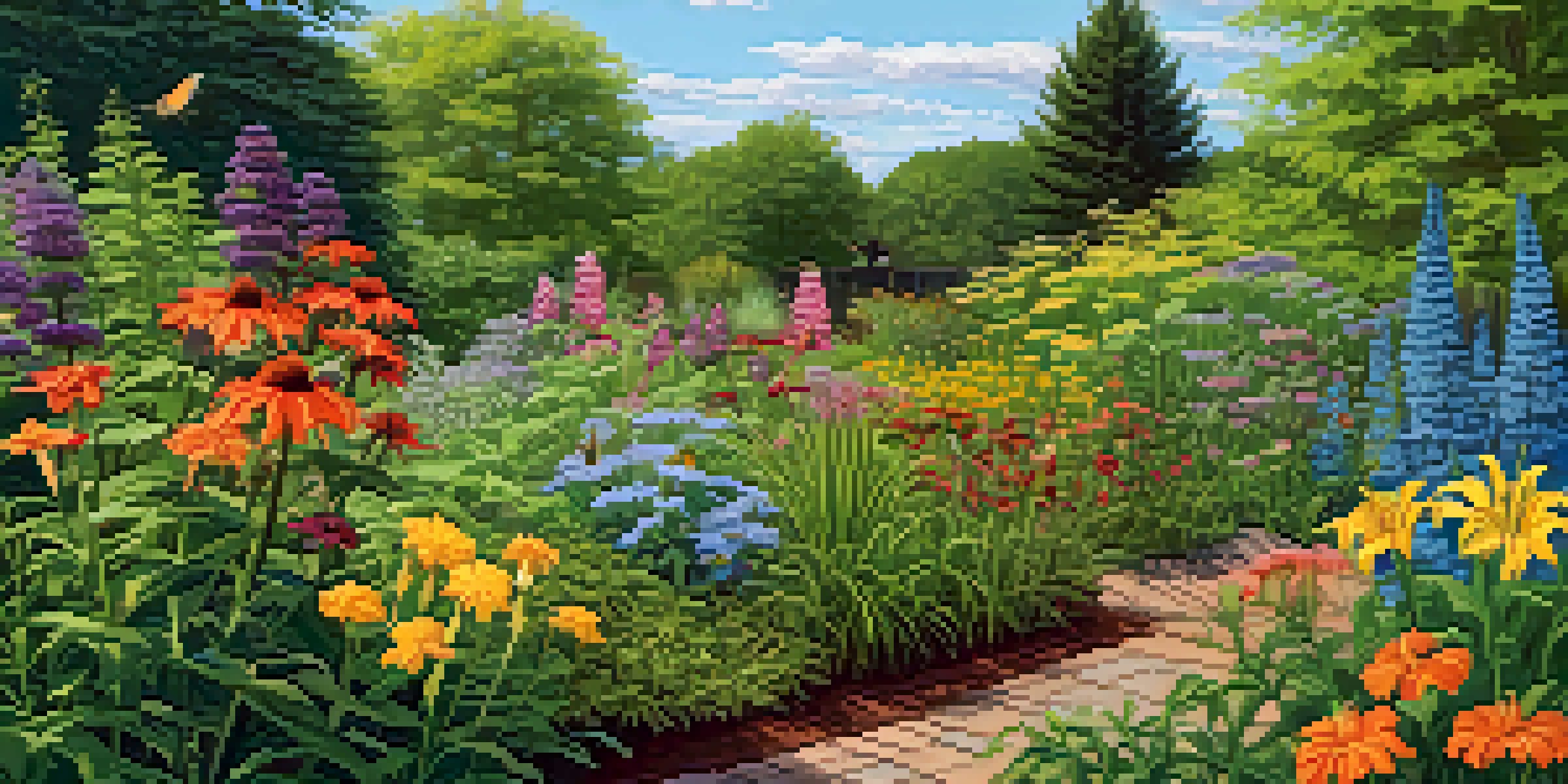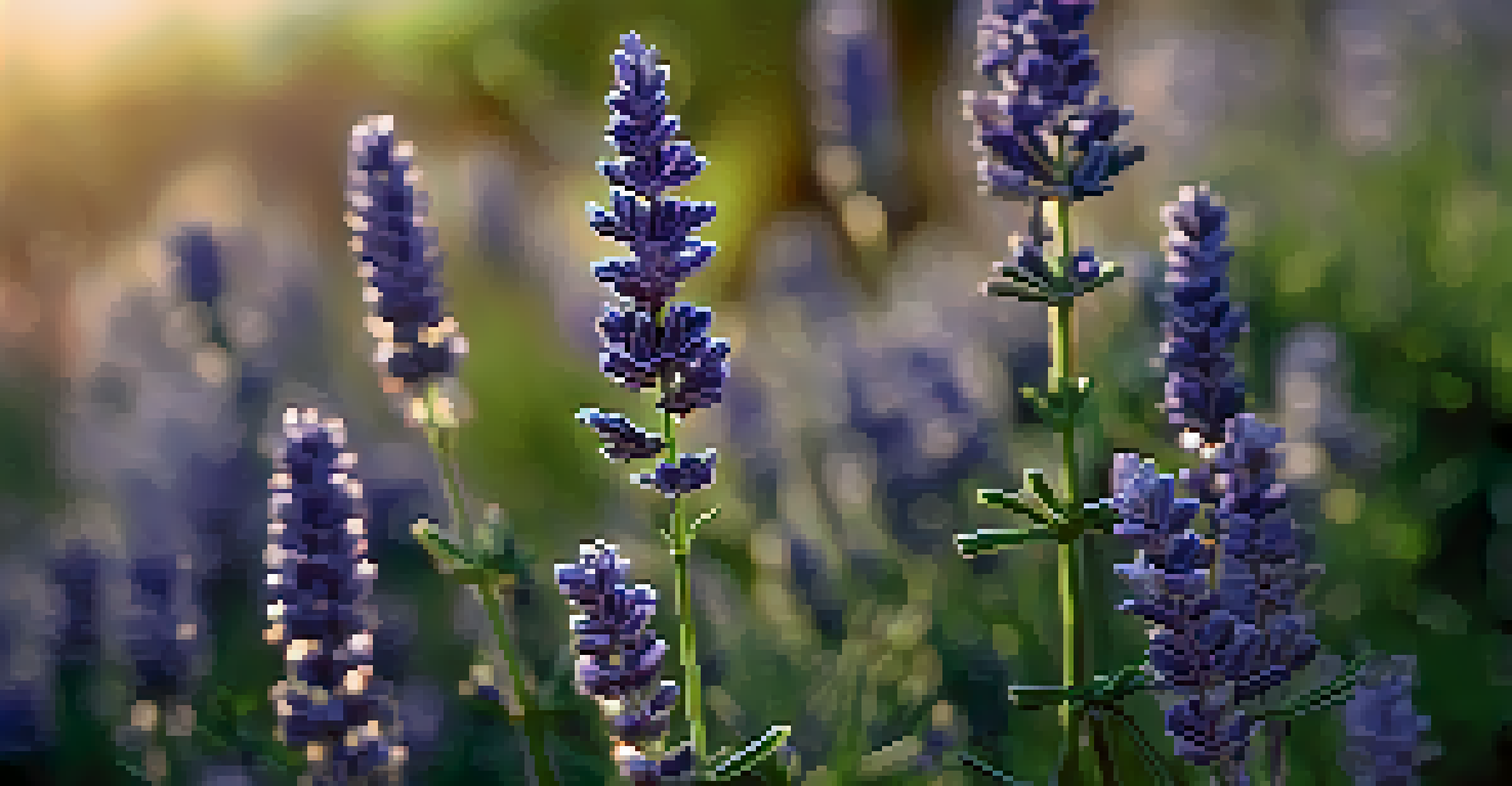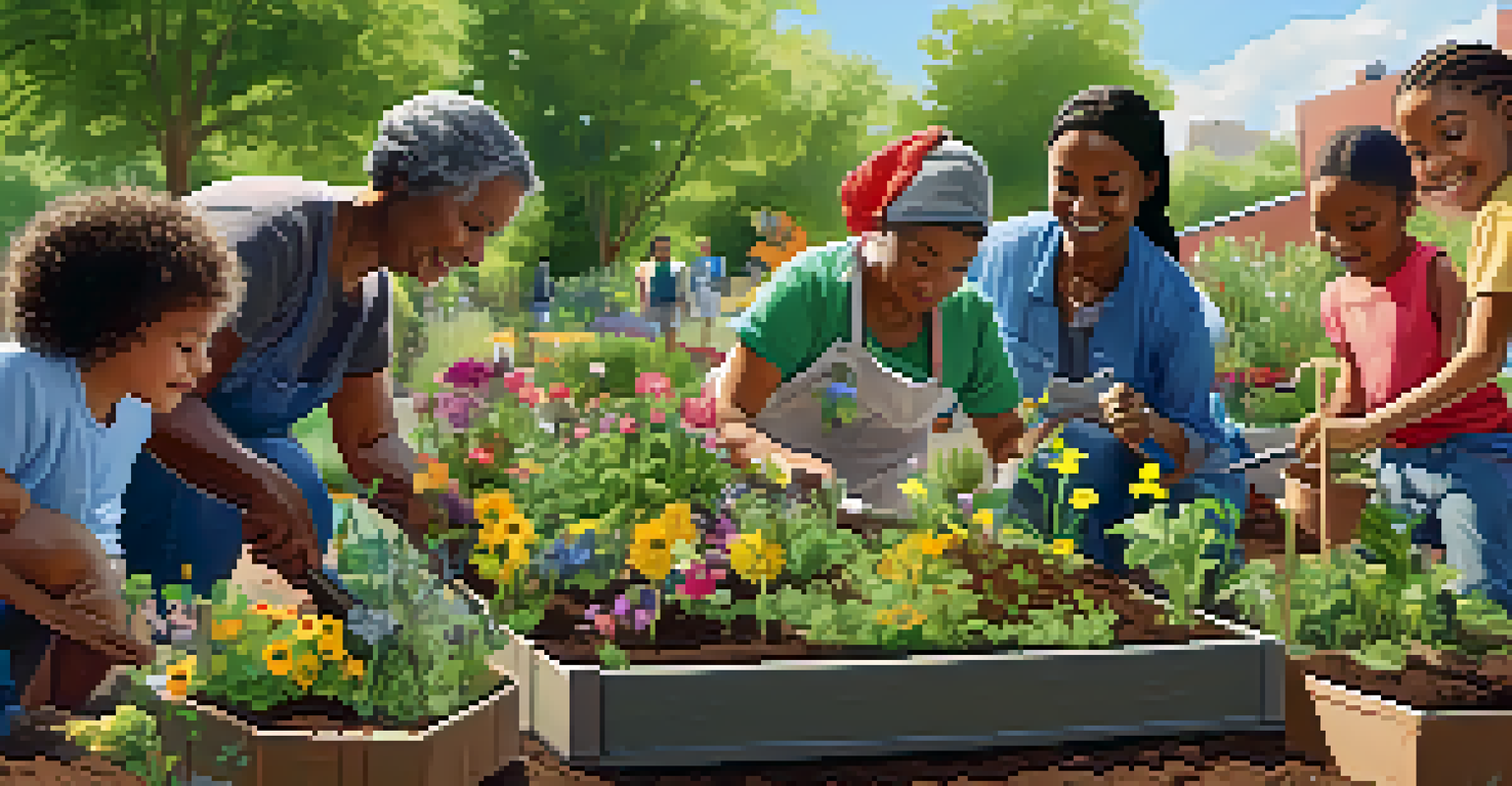Growing Perennials That Can Withstand Climate Change Effects

Understanding Climate Change and Its Impact on Gardening
Climate change is reshaping our environment, affecting weather patterns and growing seasons. As gardeners, we must recognize how these changes can influence our plants' survival and growth. Extreme temperatures, unpredictable rainfall, and pest migrations are just a few challenges we face today.
The greatest threat to our planet is the belief that someone else will save it.
Adapting our gardening practices is essential for sustainability. By choosing the right plants, we can create resilient gardens that thrive in fluctuating conditions. This article focuses on perennials, which are particularly beneficial as they return year after year, providing lasting beauty and support for local ecosystems.
Understanding the specific ways climate change affects your region can help you make informed decisions. For example, areas that are experiencing hotter summers might require drought-resistant plants, while regions with increased rainfall may need species that tolerate wet conditions.
Benefits of Growing Perennials in a Changing Climate
Perennials are a gardener's best friend when facing climate change. They have deep root systems that help retain soil moisture, making them more drought-resistant than annuals. Additionally, they require less maintenance, saving you time and resources while still providing a vibrant landscape.

Another key benefit is their ability to adapt to changing conditions over the years. Many perennials can handle fluctuations in temperature and moisture, allowing them to thrive even as the climate shifts. This resilience makes them an excellent choice for sustainable gardening.
Climate Change Affects Gardening
Gardeners must adapt to changing weather patterns and select plants that can withstand extreme conditions.
Moreover, perennials contribute to biodiversity, providing habitat and food for pollinators and other wildlife. By growing a variety of perennials, you can create a rich ecosystem that helps support the health of your local environment.
Choosing the Right Perennials for Your Region
Selecting the right perennials starts with understanding your local climate and soil type. Native plants are often a great choice, as they are naturally adapted to local conditions and require less water and care. Researching which species thrive in your area can significantly enhance your gardening success.
In nature, nothing exists alone.
Consider factors such as sun exposure, soil drainage, and temperature extremes when making your selections. For example, if you live in a particularly hot and dry region, look for drought-tolerant perennials like lavender or sedum. These plants not only survive but also add beauty to your garden.
Local extension services or gardening clubs can provide valuable insights and recommendations. Connecting with others in your community can help you find the best perennials that have already proven to thrive in your specific conditions.
Top Climate-Resilient Perennials to Consider
Several perennials stand out for their resilience to climate change effects. For instance, coneflowers (Echinacea) are not only beautiful but also drought-resistant and attract pollinators. Similarly, daylilies (Hemerocallis) can tolerate a range of conditions, making them versatile additions to any garden.
Another excellent choice is the sedum family, known for its ability to thrive in dry, rocky soils. These succulent plants require minimal water and are perfect for xeriscaping. Their diverse shapes and colors can create stunning visual interest in your garden.
Perennials Support Sustainable Gardens
Choosing perennials enhances garden resilience, reduces maintenance, and promotes biodiversity.
Lastly, consider planting bee balm (Monarda), which is not only resilient but also excellent for attracting bees and butterflies. By incorporating these plants into your garden, you can create a vibrant and sustainable space that supports local wildlife while standing strong against climate challenges.
Establishing and Caring for Your Perennial Garden
Once you’ve selected your perennials, it’s time to plant them properly to ensure their success. Start by preparing the soil, making sure it’s loose and well-draining. This step is crucial for the root systems to establish themselves and access necessary nutrients.
Water your newly planted perennials regularly until they become established, paying attention to their specific needs. Once they’re rooted in, many perennials can tolerate periods of drought, but early care is essential for their long-term survival.
Don’t forget about mulching! A layer of mulch can help retain moisture, suppress weeds, and regulate soil temperature, allowing your perennials to thrive even in fluctuating weather conditions.
Adapting Your Gardening Practices for Sustainability
As we navigate the effects of climate change, it’s essential to adapt our gardening practices for sustainability. This means using organic methods, reducing chemical fertilizers, and managing pests naturally. Encouraging beneficial insects and pollinators can lead to a healthier garden ecosystem.
Consider incorporating practices like crop rotation and cover cropping to improve soil health. These methods enhance nutrient availability and reduce erosion, ensuring that your perennials have a fertile foundation to grow.
Community Involvement is Crucial
Engaging with local gardeners fosters knowledge sharing and helps establish successful, resilient gardens.
Additionally, utilizing rainwater collection systems can provide a sustainable water source for your garden, helping you manage resources more efficiently. By making these adjustments, you contribute to a healthier planet while cultivating a thriving perennial garden.
The Future of Gardening in a Changing Climate
Looking forward, the future of gardening will increasingly rely on our ability to adapt to climate change. By focusing on resilient perennials, we can create landscapes that not only withstand changing conditions but also flourish in them. This proactive approach fosters environmental stewardship and promotes biodiversity.
Community involvement will play a crucial role in this transition. Sharing knowledge, resources, and plants with fellow gardeners can create a network of support that empowers us all to succeed. Together, we can cultivate gardens that are not only beautiful but also sustainable and resilient.

Ultimately, embracing climate-resilient perennials is more than just a gardening trend; it's a commitment to preserving our environment for future generations. By planting wisely today, we can ensure that our gardens continue to thrive, no matter what challenges lie ahead.